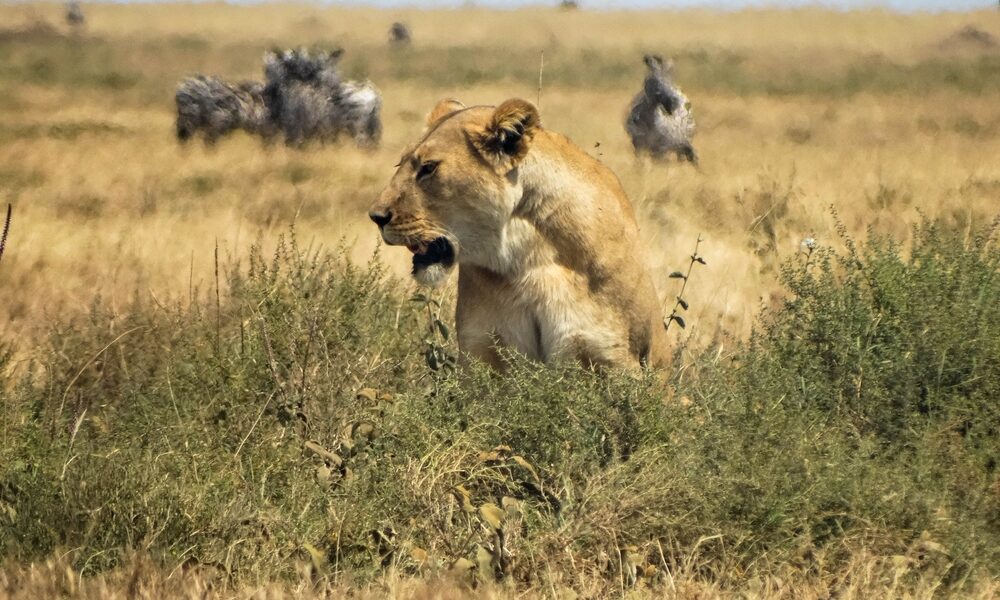Ways Prey Survive: The Art of Animal Prey Uncovered! From camouflage to mimicry, explore how animals outsmart predators and maintain ecological balance.

Understanding The Art of Animal Prey: Nature’s Intricate Web
In the natural world, the interactions between predator and prey define ecosystems. These relationships are complex and essential to ecological balance. The prey not only serves as a food source but also plays a role in shaping the behavior, physiology, and fitness of their predators. This intricate web forms the foundation for diverse and dynamic ecosystems across the globe.
The Role of Prey in Ecosystems

Prey animals are integral to ecosystems. They contribute to energy flows and nutrient cycles. In various habitats, prey species help maintain ecological balance by supporting the diet of predators. This relationship keeps populations in check. When prey numbers dwindle, predator populations also decline, highlighting their interdependence. Ecosystems like savannas, coral reefs, and forests rely on this balance to function properly.
Adaptations for Survival
Prey species have developed a range of adaptations to avoid predation. Some animals use camouflage, blending into their surroundings to evade capture. The peppered moth is a classic example, its colors shifting with environmental changes to avoid predators. Others employ speed and agility, like gazelles and rabbits, which rely on quick movements to escape threats. Some species, such as certain frogs and insects, use chemical defenses to deter predators, releasing toxins that make them unpalatable or harmful when consumed.
Sensory Enhancements

Many prey animals have enhanced senses that help them detect predators early. Rabbits and deer, for example, have large eyes positioned on the sides of their heads. This placement allows them a wide field of vision, enabling the detection of approaching threats. Some rodents possess acute hearing, allowing them to pick up on the faintest sounds of a predator’s approach. These sensory adaptations are crucial for their survival.
Behavioral Strategies
Behavioral adaptations are also significant in prey survival. Some species live in groups, such as schools of fish or flocks of birds, which can reduce individual predation risk. This phenomenon, known as the dilution effect, makes it harder for a predator to single out one prey. Certain animals, like meerkats, employ sentinel behavior, where one or more individuals keep watch for predators while others forage or rest.
Mimicry and Deception
Some prey species use mimicry to evade predators. The viceroy butterfly, which resembles the toxic monarch butterfly, benefits from this strategy, as predators avoid what they perceive to be an unpalatable meal. Deception is another tool. Some snakes mimic the appearance and behavior of more dangerous species to deter threats. This strategy can effectively confuse predators and provide a vital escape window.
Predatory Pressures and Evolution

The constant threat of predation exerts pressures that drive evolutionary changes in prey species. Natural selection favors individuals with traits that enhance survival, leading to gradual adaptations over generations. This process is evident in the relationship between cheetahs and their prey, where both predator and prey evolve speed as a critical trait for success. Predator-prey dynamics continuously shape the evolutionary paths of species involved in these interactions.
Human Impact on Prey Populations
Human activity significantly affects prey populations. The destruction of habitats through deforestation, urbanization, and climate change alters the availability of food and refuge for prey species. Overfishing and hunting directly reduce prey numbers, impacting entire ecosystems. Conservation efforts aim to mitigate these effects. Protecting habitats and regulating hunting and fishing can help sustain prey populations.
Invasive Species and Prey Dynamics
Invasive species represent another challenge to native prey populations. Without natural predators, invasive species can quickly dominate new environments, often leading to the decline of native prey. For example, the introduction of cane toads in Australia severely impacted native reptiles and amphibians not adapted to their presence. Addressing invasive species is essential for preserving ecological balance and protecting vulnerable prey populations.
Conclusion
The relationship between predators and their prey is a fundamental aspect of ecological systems. Understanding these dynamics provides insights into the natural world and informs conservation efforts. By studying the adaptations and strategies of prey, we gain a deeper appreciation for nature’s complexity and the delicate balance that sustains life on earth.




Subscribe for Updates
Get the latest articles delivered to your inbox.
We respect your privacy. Unsubscribe anytime.